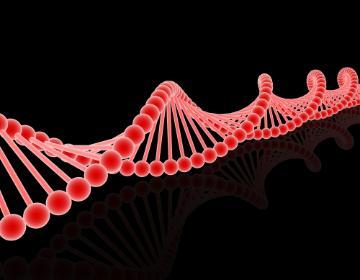
Some questions about helps and harms
How can synthetic biology help people?
“Tinkering” with biology helps people develop both new skills and new products. Beneficial products of synthetic biology that already exist today include superior agricultural crops; bioengineered organisms that can produce pharmaceuticals, biofuels or new construction materials; organisms that can stop damaging pests and invasive species; and ways to kill off pathogens and pathogenic vectors (such as mosquitos). We are only beginning to imagine the many uses of biodesign. Additionally, skills related to synthetic biology can provide people with jobs, spark new industries, and lead to great economic benefits—both for those individuals working in biodesign and for others who enjoy the products of that work.
Might synthetic biology hurt people?
Synthetic biology can potentially be used for ill as well as for good. For example, someone could modify a pathogenic organism in order to turn it into a weapon to be used against humans or other species. While such threats have been anticipated and preventive measures have been put in place, the 2001 anthrax attack shows that even with safeguards in place, not all attacks can be stopped. Moreover, unintentional non-malicious actions must also be considered. Even successful products can have unintended side effects. For example, if a bioengineered plant species were to become so successful that it dominated a key agricultural sector, our food supply would be much more uniformly vulnerable to certain pathogens. Other biodesign products that impact human health, such as pharmaceuticals, might also have unintended harmful side effects.
Does biodesign help the environment?
The products of biodesign can benefit the environment. For example, the current use of fossil fuels is contributing to climate change by increasing the concentrations of greenhouse gasses in the Earth’s atmosphere. Through biodesign, however, we hope to generate innovative solutions to this— whether by growing cheap biofuels directly, transforming another product into a fuel, or removing CO2 from the atmosphere. Biodesigned organisms can also be engineered to help manage pests or invasive species, thus protecting endangered native ecosystems from imbalances caused by environmental change and human activity. Bioengineered products can even be used for bioremediation of toxic waste, with organisms that degrade harmful toxins or concentrate them for easy collection and disposal.
Might biodesign hurt the environment?
The products of biodesign can harm the environment. For example, while genetically modified organisms have proven to be quite safe since their introduction into agriculture, it has always been a worry that they might somehow transfer genes to other species. As a result, those species might be either damaged or enhanced, thus introducing unpredictable changes into the environment. In addition to the worry about genetic leakage, there is the worry that entire human-designed organisms could escape and run amok. Genetically modified organisms, for example, could become “super-weeds” that grow unchecked and choke out native plants.
Should everyone be allowed to biodesign?
The expansion of biodesign skills can lead to a boon of new consumer bio-products and do-it-yourself biohacking. This is analogous in some ways to the invention of the personal computer and computer hacking in past decades — who will be the first Steve Jobs or Bill Gates of biodesign? At the same time, we can certainly think of people whose access to biodesign technologies would be dangerous—such as the governments of rogue states, terrorists, and criminals. Moreover, the actions of untrained or careless experimenters could also lead to harmful consequences. We don’t allow everyone to conduct surgery, or even to drive; is some synthetic biology similarly dangerous for untrained folks to attempt? As a society, we need to think closely about whether and how we should restrict use of these powerful new technologies.
Are there any organisms we should not biodesign?
Should humans be allowed to biodesign microbes, plants, and fungi? Do we have the right to manipulate other creatures for our own purpose? And even though humans have been manipulating organisms for millennia through domestication practices, should we use biology to “tinker” with animals? If so, what kind of animals? Should we modify insects and small animals, but not large animals like pigs and cattle? Should we engineer domestic animals but not wild ones? What about humans? In an effort to cure, say, horrible genetic diseases, should we genetically modify human adults or embryos? What are the proper limits for these tools?
This set of questions was prepared for the Center's work with the Tech Museum of Innovation to include ethical considerations in the museum's exhibits and curricular resources. Irina Raicu is Center director of Internet Ethics. Brian Green is assistant director of campus ethics and adjunct professor in the Graduate School of Engineering at SCU.
